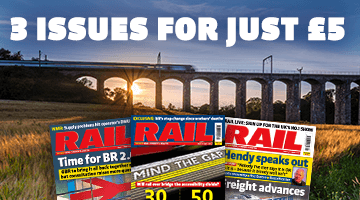Dissatisfied with progress, Grayling remains no less persuaded of the increasingly strong business case for completing East West, which would link important wealth creation areas of the country (including Cambridge, Oxford and Milton Keynes). The National Infrastructure Commission has called this corridor a “national asset”, and identified in an interim report (published in November) the fundamental part that East West could play in unlocking more than 100,000 new homes and 120,000 additional jobs across the region, contributing to economic growth worth an added £163 billion by 2050.
Brighouse shares Grayling’s enthusiasm for the economic merits of the project. He says identifying a way to secure this growth will be the core focus of his scoping report, with more specific operational and technical decisions to be made later.
“You have Oxford, which is a fantastic technical hub, and a great generator of jobs and wealth and competitive advantage for this country. And then you have Bicester, which is a fantastic growing town.
“Just the fact that we’ve already built a two-track railway that links those two towns in a really effective way supports the development of those two towns. We’re enabling Oxford to grow and continue to be a high-tech city, and we’re giving people in Bicester great connectivity. And I think, as we go forward, we’re doing the same along the whole East West route.
“You have Milton Keynes and elsewhere, so it’s not just about Oxford and Cambridge, it’s about the whole corridor and getting the best facilities for both business and residential areas, creating employment opportunities along the whole route. Which is why I say to you it’s an economic project and not a rail project.
“One of the key issues, as this goes beyond rail, is getting absolute clarity on why we’re building this. Is it just about having a rail car that shuttles between Oxford and Cambridge, or is this a fundamental change to the UK passenger and freight network?
“What we really need to do is get to the bottom of the economic and socio-economic needs of this route, and that will then drive what the right train service is to meet those needs. That will then drive the infrastructure and operational requirements, so we need to drill into that and make sure there’s clarity and unanimity of what is being built.
“To my mind this is much more than a rail project, it’s an economic project. We have to make sure that what we deliver as a rail industry actually meets the Government’s and society’s objectives from a socio-economic point of view.”
Brighouse will not reveal much else about the content of the report prior to its formal publication, but is happy to confirm that various models of DBFO (Design Build Finance Operate) are being considered for how EWR will be funded, structured and will operate, once the DfT’s shadow company becomes fully fledged.
This could mean that infrastructure is owned by an institutional investor, for example, and then operated as a concession or on an open access basis (like High Speed 1). Other models of DBFO might result in investors operating services themselves, or sub-contracting a number of elements such as maintenance.
Brighouse is also in dialogue with potential third party funders, in order to establish a workable mechanism to deliver a return on investment through EWR, although those details also remain confidential until publication of the report.
He concludes: “I don’t want to disappoint you, but the key is what I’ll say at the end of March.
“There are never problems in life, only opportunities, and that is my philosophy on life. It’s a challenge, but a lovely challenge. I don’t underestimate it - it’s a big challenge. But with the right attitude and the right approach, with strong government support and direction, I’m sure it is something we can do.
“It’s not just good for the rail industry, it’s good for the economy if we do it right. And I think that’s hugely important.”
This feature was published in RAIL 822 on 11th March 2017
















Login to comment
Comments
No comments have been made yet.